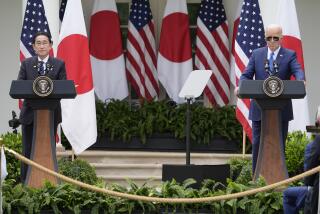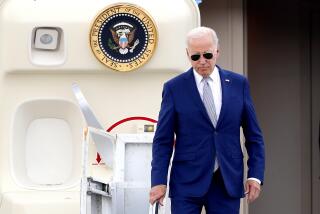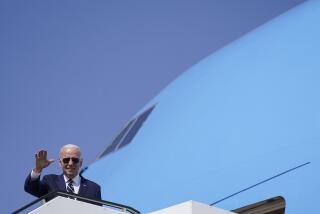Just What Is Clinton Looking for in Asia? : Well-intentioned Waseda speech raises hopes--and questions
In his first trip abroad as President of the United States, Bill Clinton has been occupying center stage in Tokyo, trying to get the GATT talks off the dime and, in a speech to an audience of Japanese students and faculty at Waseda University, seeking to outline a sensible Asia-Pacific policy. The President deserves very high marks for the energetic effort. But it’s fair to say that this Administration looks to be casting about for a Japan policy and so seems at times to be uncertain of just what it wants or where it stands.
THE NEW TONE: It’s notable that Clinton was markedly conciliatory in tone in his Tokyo meeting with the lame-duck Japanese Prime Minister Kiichi Miyazawa, who lost a parliamentary no-confidence vote since the two first met three months ago in Washington. Clinton shifted from his initial brashness in his criticizing of Tokyo’s huge trade surplus with the United States. Then came the Administration’s firm requests for measurable results in bringing down the huge U.S. and Japanese trade imbalance. Negotiators are working tocome up with a new trade framework amid the distractions of a changing political picture in Tokyo, which may end the 38-year reign of the Liberal Democratic Party. The effect of such a political earthquake onU.S.-Japanese relations is entirely unclear.
Obscured in all of this was the President’s first attempt in his speech at Waseda to put U.S.-Japan relations in context of a larger Asia-Pacific strategy that the Administration is struggling to put together. Asian nations have been monitoring the changing Washington and Tokyo dynamics closely, fearful that a fallout between the two would have serious repercussions for the entire Asia-Pacific region. As evidence of the Administration’s commitment to Asia, after the G-7 summit is over, Clinton will go to South Korea.
THE OLD BROMIDE: In the Waseda speech, designed as a forum for the Administration’s economic policies toward Asia and the Pacific, Clinton was careful to reiterate the U.S. commitment to the longstanding security and political relationship with Japan, reaffirming the bromide that there is no more important bilateral relationship than the Washington-Tokyo connection. He also called on Japan and other Asian nations to join with the United States to create a “new Pacific community.” He invited leaders of Asian nations to join him for an “informal” summit in Seattle this fall at the annual 15-nation meeting of the Organization of Asian Pacific Economic Cooperation.
Clinton briskly outlined the Administration’s goals in developing a Pacific community. They include building a more open regional and global economy, supporting democratic reforms in the region and protecting human rights. He rightly warned “there is no cultural justification for torture and tyranny.” All those are wonderful, inarguable sentiments--but not exactly clarifying concepts.
The U.S.-Japan relationship is supposed to be the centerpiece of this emerging new policy to address a dynamic, fast-growing part of the world in which the United States must remain a significant player and leader. While the Administration has the right strategic focus, its strategy leaves something to be desired because it is so embryonic.
But this is a new Administration, and there is some time to get things right. But not much.
More to Read
Get the L.A. Times Politics newsletter
Deeply reported insights into legislation, politics and policy from Sacramento, Washington and beyond. In your inbox three times per week.
You may occasionally receive promotional content from the Los Angeles Times.










